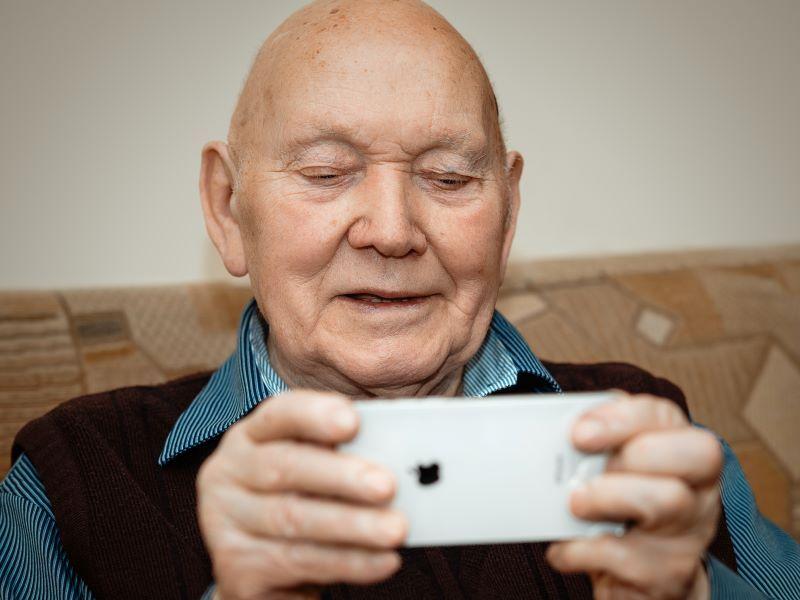
Three steps to successful rapid-response civic engagement with students
Kathleen Riach outlines key lessons from successfully leading a rapid-response civic engagement project with students to help over 50s gain better digital access

A flurry of rapid-response community engagement projects have been launched in the past 18 months, each seeking to address specific challenges bought to the fore by the pandemic. Across higher education there is growing momentum surrounding civic engagement, accelerated by Covid-19.
However, such rapid-response initiatives require careful navigation and negotiation by those in charge, to get them off the ground and make them a success.
One example of this is , an intergenerational mentoring scheme where academics and students work together to provide crowdfunded devices, internet access and online digital training to over 50s in the local community who have little or no digital access.
Here are three key lessons we believe helped bring this project to fruition in just four months in 2020.
1. Be clear about your objectives
“Doing good” is not enough to transform a great idea into an impactful project. Often general aims and motivations for civic engagement are well understood, but successful initiatives need clear alignment with how multiple parties will benefit and why this is important.
What is the unique value of a university, rather than another community or volunteer group, undertaking this initiative? Why are you the specific member of faculty who should lead this? And how does it explicitly align with broader institutional or sector-wide strategies in ways that will help secure buy-in from the various internal and external stakeholders needed to make it a success?
Start with benefits that are mutual, clear and articulated. While improving digital isolation throughout the community was important, the students involved with DigiGallus Connect were concerned they must not come across in a Victorian-style caricature of charity, where the university as the “building on the hill” was bestowing its graces on the less fortunate “down below”.
To avoid this, DigiGallus Connect articulated and foregrounded the unique student benefits of their experience mentoring and developing skills in intergenerational communication. As the initiative evolved, an additional benefit emerged among student volunteers: helping them feel part of the fabric of Glasgow even when they were studying remotely during lockdown. These benefits enabled us to easily articulate the initiative through the “Glasgow Graduate” attribute we aspire to as an institution.
2. (Re)think of the university as a community
We use the world “community” a lot in universities, but beyond learning, scholarship or administrative teams, how often do we actually think of ourselves as a group of people in multiple roles across a multifaceted organisation that can work together to achieve something? Civic engagement provides an opportunity to consider ourselves not just as a teaching or research base, but as a group of people with diverse set of capacities that can be drawn on.
During its development, DigiGallus Connect not only benefitted from research expertise across a number of departments, but students reached out to a range of staff across the institution, from human resources for help with volunteer contracts, to external relations for use of their online crowdfunding platforms, to IT for advice about licensing and e-waste. People within these teams are rarely involved in the front line of student learning but saw supporting students as part of why they worked in a university. They welcomed the chance to contribute to a civic engagement agenda that they felt was generally focused on academic faculty or student activities.
When rethinking community, it is also important to consider who in the community you might be leaving behind. DigiGallus Connect was a volunteer initiative and we have previously found that extracurricular activities are disproportionately taken up by students from more privileged backgrounds. This concern made us think a bit more about how taking part could be integrated more within the curriculum. For example, for some students their experience became the basis for dissertations while others used it within course reflections, allowing immediate benefits to emerge from participation. We also offered different volunteering roles with various levels of time commitment.
3. Be creative about how you use university infrastructures and resources
While there is widespread agreement about the importance of civic engagement, it is a nomadic activity that straddles research and impact, teaching and learning and collegial expectations. Add to this the complexity of most universities in terms of structures and governance and it becomes incredibly difficult knowing what resources are available to you.
Most universities do have some funding for user engagement activities surrounding research that might be used for civic engagement but often the most valuable resources emerge from within the infrastructure itself. If students are involved in the initiative, there will be a range of places to find documents, protocol and guidance that you can adapt for your project – the challenge is locating the people you need to talk to, and knowing where to look.
One example is safeguarding. There may not be safeguarding frameworks or protocols that fit exactly with your civic engagement initiative, requiring you to create something from an amalgamation of student fieldwork guidance, research ethics policies and health and safety protocol. Given that universities usually err on the side of strict governance and a conservative approach to change, it can feel risky to try creating these yourself, so gaining a senior sponsor within the institution to help you facilitate this can save a lot of time and angst.
Part of this is also knowing where to turn when things go wrong. There will always be hiccups that catch you unawares. On one occasion we had to spend two long and stressful days negotiating an incident where a community partner had become abusive, resulting in safeguarding protocols that we had written in principle being put in practice. We discovered that, by reaching out across chains of individuals within the institution, there were more practices in place that could be drawn on than we’d previously imagined.
Be bold
The “Gallus” in DigiGallus is Scottish slang for being a bit bold and cheeky, and this sums up the attitude to any rapid-response civic engagement initiative where we collaborate with students to work and learn beyond the walls of the university. When we deliberately remove certain barriers between the university and world around us, complexities and challenges arise that require creativity and openness on the part of faculty and the wider institution. This might involve imperfect solutions and an acceptance that mistakes will be made within the fast timescales that contrast with our usual steady pace of research and learning. However, when civic engagement as a rapid-response activity gives students – and ourselves – the chance to meaningfully embody and enact change in response to a global challenge, it’s all worth it.
Kathleen Riach is lead for responsible and sustainable management and professor of organisation studies at the Adam Smith Business School, .


